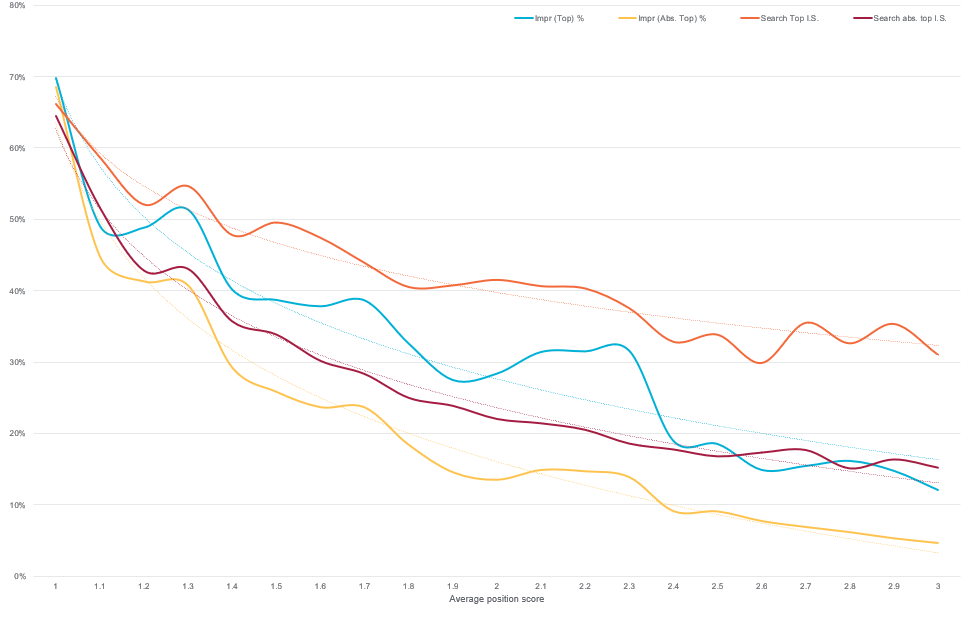
![]() Insights
Insights
Search Ads 360
In November, Google rolled out four new competitive metrics based on impression share. It came as no huge surprise then when they later announced that they will be retiring average position indefinitely in September, with the reason being that average position doesn’t give a true representation of where the ad appears on the search page.
While an average position of 1.0 might suggest that the ad is the first thing a searcher sees, this is not necessarily the case; it simply means it will appear on average before all other ads in the auction, not that it will appear as the first result in the search listing. Some searches do not return paid results until after organic results – in this scenario, ad position 1 would be at the bottom of the page, and it’s likely that impressions and click-through rate would be low.
The new impression share metrics aim to provide greater clarity on where your ad is positioned on the search results page:
The first two metrics indicate the specific ad location, while the two latter show what share of all eligible top impressions (with eligibility being calculated based on your current ads’ target settings, approval statuses, bids and quality).
Both of the search impression share metrics indicate the impressions your ads could be getting if you were to increase your ad position.
Google’s launch of target impression share bidding last year means that the metrics can also be used to inform your smart bidding strategy; Impression. (Absolute Top) % and Impression (Top) % replace the need for average, while Search (Absolute Top) Impression Share and Search (Top) Impression Share can be used instead of average position to bid to a page location.
With the metrics came the launch of a new Smart Bidding strategy from Google – Target Impression Share, meaning Search (Absolute Top) Impression Share and Search (Top) Impression Share can be used instead of average position to bid to a page location.
While we’re moving with the times and using these new metrics in our ad campaigns moving forward, we were interested in finding out the relationship between average position and the newer metrics to see how they compare. To do this, we plotted out the data across all four metrics for all our non-brand ads over the last 6 months, weighted by impression.

As you might expect the closest relationships come from the Absolute Top metrics. What’s interesting to see that for non-brand searches an average position of 1.0 could be showing at the absolute top of page less than 70% of the time, highlighting the level of visibility into the SERP that these new metrics provide.
With greater transparency on how many ads are truly hitting the number one position in the SERPs, we’re likely to see much greater competition for top spot. We can expect CPCs and CPAs to rise as marketers aim towards 100%.
Get the latest PPC insights from the teamSubscribe here

![]() Insights
Insights

![]() Insights
Insights

![]() Insights
Insights